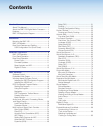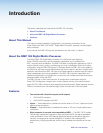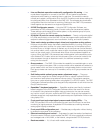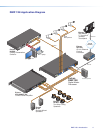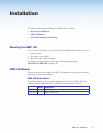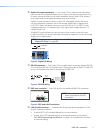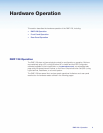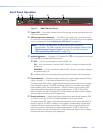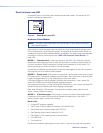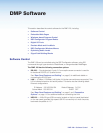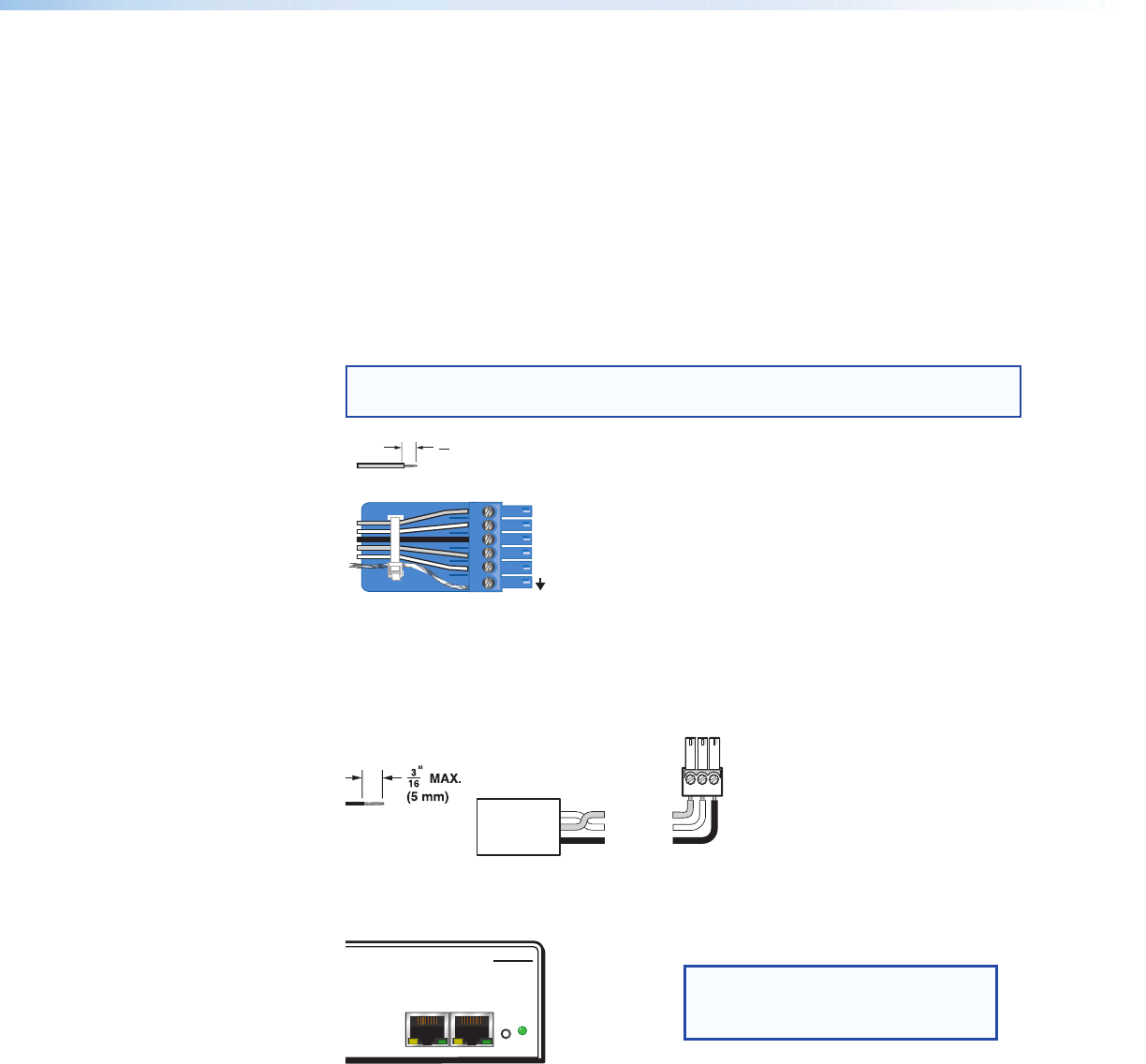
f Digital I/O output connectors — Four 6-pole 3.5 mm captive screw connectors
each provide five configurable digital input or output ports allowing connection of up
to twenty various devices such as motion detectors, alarms, lights, LEDs, buttons,
photo (light) sensors, temperature sensors, and other devices.
Digital I/O ports are used to monitor or drive TTL level digital signals. The inputs
can be configured to operate in one of two modes: digital input or digital output.
In OUTPUT mode, the device can source up to 250mA at +5 V. In INPUT mode,
voltages greater than 1 V indicate a logic ‘high’ signal while voltages less than 1 V
indicate a logic ‘low’.
All digital I/O ports are tied to a common ground (one common ground for each
6-pole connector), but can be individually configured to operate in one of two modes:
digital input or digital output
NOTE: These ports can be configured via the DSP Configurator (see
“DigitalI/OPorts” on page88).
Do not tin the wires!
(5 mm) MAX.
3 "
16
1
2
3
4
5
Digital I/O Wiring
Figure 4. Digital I/O Wiring
g RS-232 connector — One 3-pole 3.5 mm captive screw connector, labeled RS-232,
for bi-directional RS-232 (±5V) serial control. Default baud rate is 38400. The RS-232
port is not intended to be used for configuring the DMP128.
Receive (Rx)
Transmit (Tx)
Ground (G)
Bidirectional
RS-232
Device
Ground ( )
Receive (Rx)
Transmit (Tx)
RxTx
G
G
Do not tin
the wires!
Figure 5. RS-232 Wiring
h EXP port connector — One RJ45 jack for one additional DMP128 connection.
RESET
DMP 128
Digital Matrix
Processor
LANEXP
Figure 6. EXP and LAN Connections
i LAN (RJ-45) connector — A standard RJ-45 jack (see above) accepts an RJ-45
plug for Ethernet connection.
• A yellow (ACT) LED indicates data activity on the connection.
• A green (Link) LED indicates the jack is connected properly to the network.
See “SIS Programming and Control” on page 113 for additional information
on Ethernet cabling.
NOTE: A one foot shielded CAT6
cable is provided for the EXP
connection.
DMP128 • Installation 7



